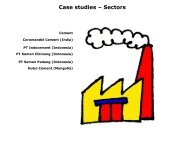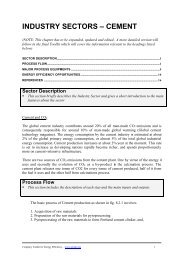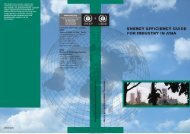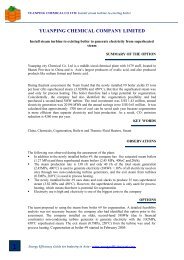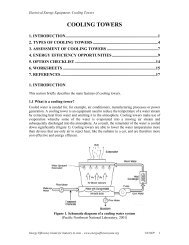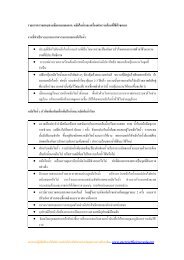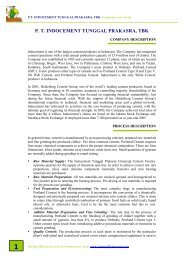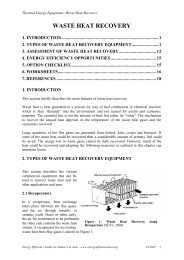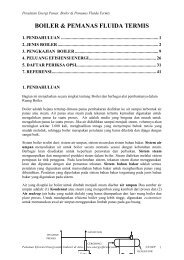Chapter - Fuels and Combustion - RETScreen International
Chapter - Fuels and Combustion - RETScreen International
Chapter - Fuels and Combustion - RETScreen International
Create successful ePaper yourself
Turn your PDF publications into a flip-book with our unique Google optimized e-Paper software.
Thermal Equipment: <strong>Fuels</strong> <strong>and</strong> <strong>Combustion</strong><br />
3.3 Concept of Excess Air<br />
For optimum combustion, the real amount of combustion air must be greater than that<br />
required theoretically. Part of the stack gas consists of pure air, i.e. air that is simply heated to<br />
stack gas temperature <strong>and</strong> leaves the boiler through the stack. Chemical analysis of the gases<br />
is an objective method that helps to achieve finer air control. By measuring CO2 or O2 in flue<br />
gases (by continuous recording instruments or Orsat apparatus or some cheaper portable<br />
instruments) the excess air level <strong>and</strong> stack losses can be estimated. The excess air to be<br />
supplied depends on the type of fuel <strong>and</strong> the firing system.<br />
A faster way to calculate the excess air is by using the figures 2 <strong>and</strong> 3, provided the<br />
percentage of CO2 or O2 in the flue gases have been measured.<br />
Figure 2. Relation between CO 2 & Excess Air<br />
(Bureau of Energy Efficiency, 2004)<br />
Figure 3. Relationship between residual oxygen <strong>and</strong> excess air<br />
(Bureau of Energy Efficiency, 2004)<br />
Energy Efficiency Guide for Industry in Asia – www.energyefficiencyasia.org ©UNEP 16



